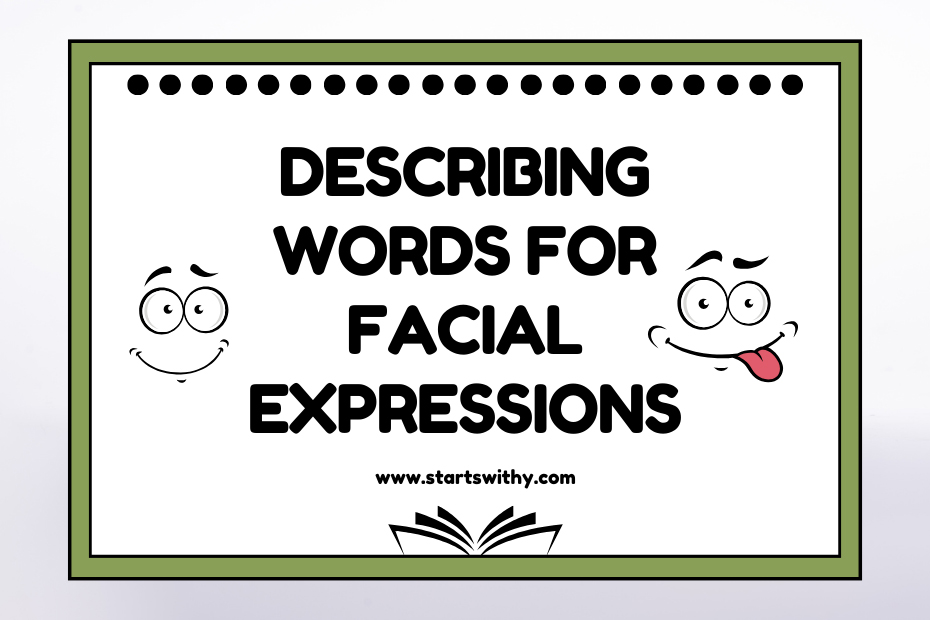Hey there! Have you ever struggled to find the right words to describe someone’s facial expression? Well, look no further! In this article, I’ll be sharing a comprehensive list of adjectives that you can use to describe various facial expressions. Whether you’re a writer trying to add depth to your characters or simply want to enhance your descriptive skills, these adjectives will come in handy.
From a radiant smile to a furrowed brow, facial expressions can convey a wide range of emotions. And with the right adjectives, you can paint a vivid picture in the minds of your readers. So, get ready to explore a treasure trove of descriptive words that will bring your writing to life. From joyful and ecstatic to perplexed and somber, we’ll cover it all. Plus, I’ll provide you with examples to illustrate how these adjectives can be used effectively in sentences.
How to Describe facial expressions? – Different Scenarios
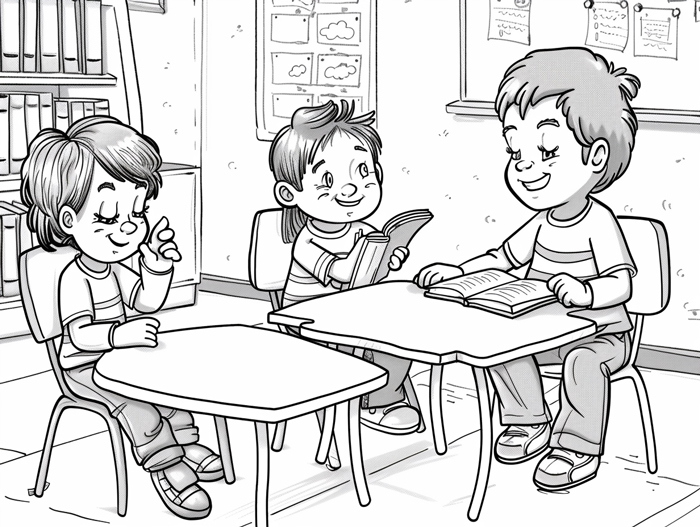
When it comes to describing facial expressions, using the right adjectives can make all the difference in creating a vivid and engaging scene. Whether you’re writing a story, a poem, or simply trying to express yourself accurately, here are some tips for describing facial expressions in different scenarios:
- Happiness and Joy: To capture the essence of a radiant smile or a beaming face, consider using adjectives such as “joyful,” “ecstatic,” or “elated.” These words help convey a sense of happiness and positivity.
- Sadness and Grief: Describing a downcast or tearful expression requires words that portray a sense of sadness and longing. Some adjectives that can be useful in these scenarios include “heartbroken,” “gloomy,” or “sorrowful.”
- Anger and Frustration: When it comes to anger or frustration, you want to choose words that convey intensity and tension. Consider using adjectives like “furious,” “livid,” or “exasperated.”
- Surprise and Astonishment: Describing a surprised or astonished expression requires adjectives that capture a sense of disbelief or awe. Some appropriate words include “astonished,” “flabbergasted,” or “stupefied.”
Describing Words for facial expressions in English
As a teacher, I know how important it is to help children expand their vocabulary. One way to do this is by teaching them describing words, also known as adjectives. Adjectives are words that describe or give more information about something. When it comes to facial expressions, using the right adjectives can help children understand and describe emotions better.
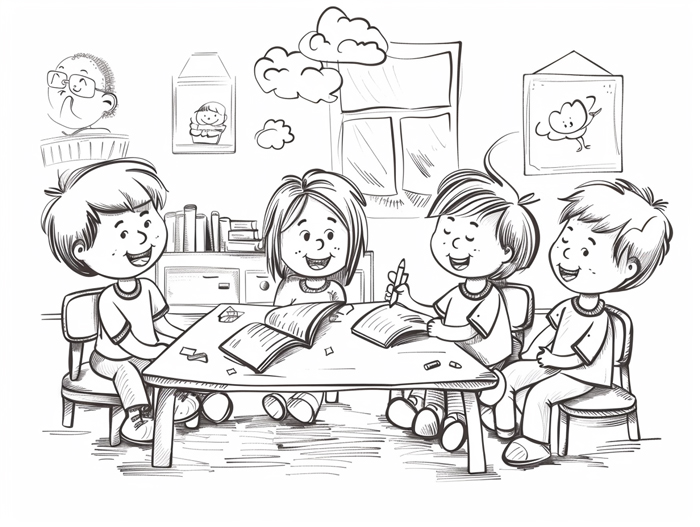
Let’s explore some common adjectives that can be used to describe facial expressions:
- Happy: A smile can light up a room, and using the right words can help children express this joyful emotion. Some adjectives that can be used to describe a happy face include:
- Sad: When someone feels down or unhappy, their facial expression might change. Here are some adjectives that can be used to describe a sad face:
- Angry: Anger can cause noticeable changes in a person’s face. Here are some adjectives that can be used to describe an angry expression:
- Surprised: A sudden surprise can make someone’s facial expression quickly change. Some adjectives to describe a surprised face are:
Teaching children these adjectives can help them describe their own emotions and understand others better. It can also be a fun and interactive activity where they can practice using these words in sentences or role-playing different facial expressions.
For example, you can show them pictures or use a mirror to help them practice making different facial expressions. Then, encourage them to use the adjectives they have learned to describe what they see or how they feel.
By teaching children adjectives for facial expressions, we are helping them develop their emotional intelligence and communication skills. These skills will be valuable as they grow and navigate the world around them.
Adjectives for facial expressions
When it comes to describing facial expressions, capturing the right words is key. By using specific adjectives, we can effectively convey various emotions. In this section, I’ll provide you with positive and negative adjectives for facial expressions, along with example sentences to help illustrate their usage. Let’s dive in!
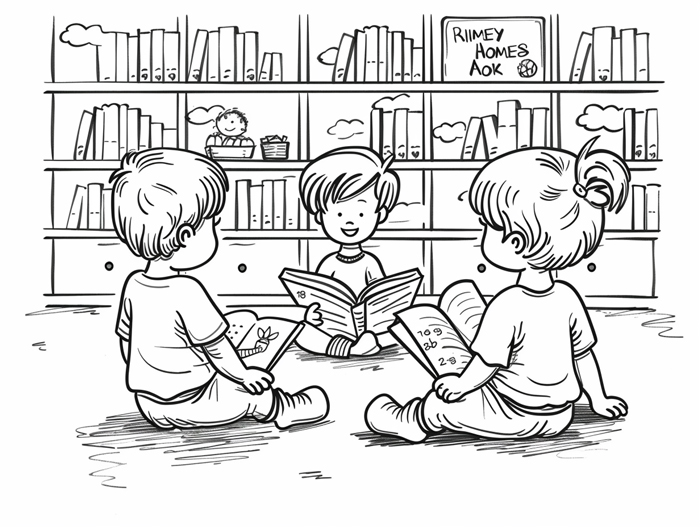
Positive Adjectives for Facial Expressions
Positive facial expressions can convey a range of emotions, from happiness to excitement. Here are twelve examples of adjectives that can describe positive facial expressions:
| Adjective | Definition | Example Sentence |
|---|---|---|
| Joyful | Feeling or expressing great delight or happiness | She has a joyful smile on her face. |
| Excited | Feeling or showing enthusiasm or eagerness | His excited eyes lit up when he saw the surprise. |
| Delighted | Feeling or showing great pleasure or satisfaction | I am delighted to see you with that big grin on your face. |
| Contented | Feeling or expressing happiness or satisfaction | The baby looks contented as she peacefully sleeps. |
| Amused | Feeling or showing humorous enjoyment | The comedian’s joke left him amused with a wide grin. |
| Radiant | Emitting light or glowing brightly | Her radiant smile brightens up the whole room. |
| Enthusiastic | Having or showing intense excitement or interest | She greeted us with an enthusiastic smile and sparkling eyes. |
| Blissful | Experiencing complete happiness and joy | The newlyweds looked absolutely blissful on their wedding day. |
| Serene | Calm, peaceful, and untroubled | She approached the situation with a serene expression on her face. |
| Proud | Feeling deep pleasure or satisfaction in one’s achievements | The student wore a proud smile after receiving her award. |
| Grateful | Feeling or showing appreciation and thankfulness | They had a grateful look on their face after receiving the gift. |
| Sweet | Pleasant or endearing to one’s senses | He gave me a sweet smile that melted my heart. |
Negative Adjectives for Facial Expressions
Negative facial expressions can convey emotions such as sadness, anger, or frustration. Here are five examples of adjectives that can describe negative facial expressions:
| Adjective | Definition | Example Sentence |
|---|---|---|
| Sad | Feeling or showing sorrow or unhappiness | She had a sad expression on her face after hearing the news. |
| Angry | Feeling or showing strong displeasure or hostility | His angry glare made everyone in the room feel uneasy. |
| Frustrated | Feeling or expressing annoyance or dissatisfaction | They wore frustrated expressions as they tried to solve the puzzle. |
| Worried | Feeling or showing concern or anxiety | The mother had a worried look on her face while waiting for her child. |
| Disappointed | Feeling or expressing dissatisfaction or letdown | He had a disappointed expression when he didn’t receive the gift. |
Remember, teaching children these adjectives will help them better understand and describe emotions. Interactive activities, like using pictures or mirrors to practice making different facial expressions, can be a fun and effective way for them to learn. Encourage children to use these adjectives to describe what they see or how they feel. Developing their emotional intelligence and communication skills is essential for their overall growth and well-being.
Synonyms and Antonyms with Example Sentences
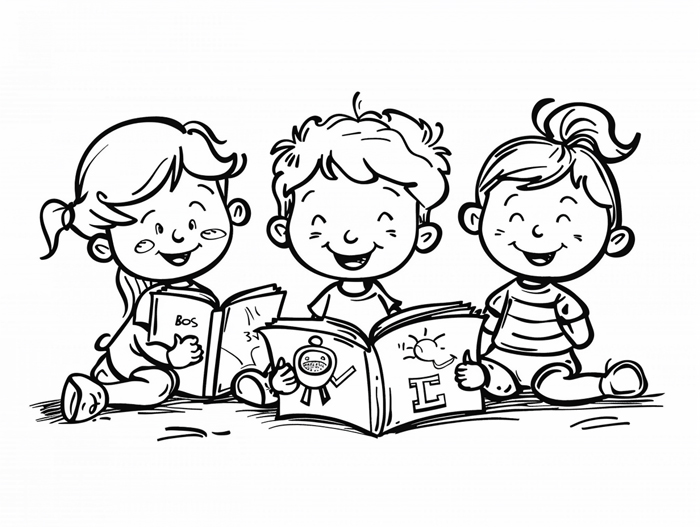
Synonyms for Facial Expressions
When it comes to describing facial expressions, there are plenty of adjectives to choose from. Here are some synonyms that can help you expand your vocabulary and effectively communicate emotions:
| Adjective | Definition | Example Sentence |
|---|---|---|
| Happy | Feeling or showing pleasure or contentment | I couldn’t help but smile when I saw her happy face. |
| Excited | Feeling eager and enthusiastic | He was excited to see his favorite superhero at the birthday party. |
| Sad | Feeling or showing sorrow or unhappiness | The little girl had a sad expression on her face after losing her favorite toy. |
| Angry | Feeling or showing strong displeasure or irritation | He became angry when someone accidentally spilled juice on his new shirt. |
| Surprised | Feeling or showing astonishment or amazement | She had a surprised look on her face when she saw the elaborate birthday cake. |
By teaching children these synonyms for facial expressions, we can help them better understand and describe their emotions. Encourage them to use these words when they see someone’s face and ask them how they think that person is feeling.
Antonyms for Facial Expressions
Antonyms are words that have opposite meanings. Here are some antonyms for facial expressions:
| Adjective | Definition | Example Sentence |
|---|---|---|
| Happy | Feeling or showing pleasure or contentment | He went from happy to sad when he realized he forgot his lunch. |
| Excited | Feeling eager and enthusiastic | She was no longer excited when she found out the party was canceled. |
| Sad | Feeling or showing sorrow or unhappiness | The movie went from sad to happy when the main character was reunited with their family. |
| Angry | Feeling or showing strong displeasure or irritation | He quickly went from angry to calm once he realized the misunderstanding. |
| Surprised | Feeling or showing astonishment or amazement | They went from surprised to bored when the magician’s trick didn’t work. |
Teaching children antonyms for facial expressions can help them understand the range of emotions people experience and reinforce their emotional intelligence. Encourage them to think of situations where someone’s expression changed from one emotion to its opposite.
By expanding their vocabulary with synonyms and antonyms for facial expressions, children can improve their ability to describe and understand emotions. This can have a positive impact on their emotional intelligence and communication skills, allowing them to better navigate social interactions and express themselves effectively.
Conclusion
Expanding our vocabulary with adjectives for facial expressions is a powerful tool for understanding and describing emotions. By teaching children these words, we can help them develop their emotional intelligence and communication skills.
In this article, we have explored a comprehensive list of synonyms and antonyms for describing facial expressions. Each word comes with an example sentence, allowing children to grasp the meaning and usage of these words in context.
Encouraging children to think about how others are feeling and describing situations where facial expressions change can foster empathy and social awareness. By using these adjectives, we empower children to express their own emotions effectively and understand the emotions of others.
Remember, words have the power to shape our perception and understanding of the world. By incorporating these adjectives into our daily conversations, we can create a more emotionally intelligent society where empathy and understanding thrive.
So, let’s equip children with the language they need to navigate the complexities of emotions and foster meaningful connections with others.
